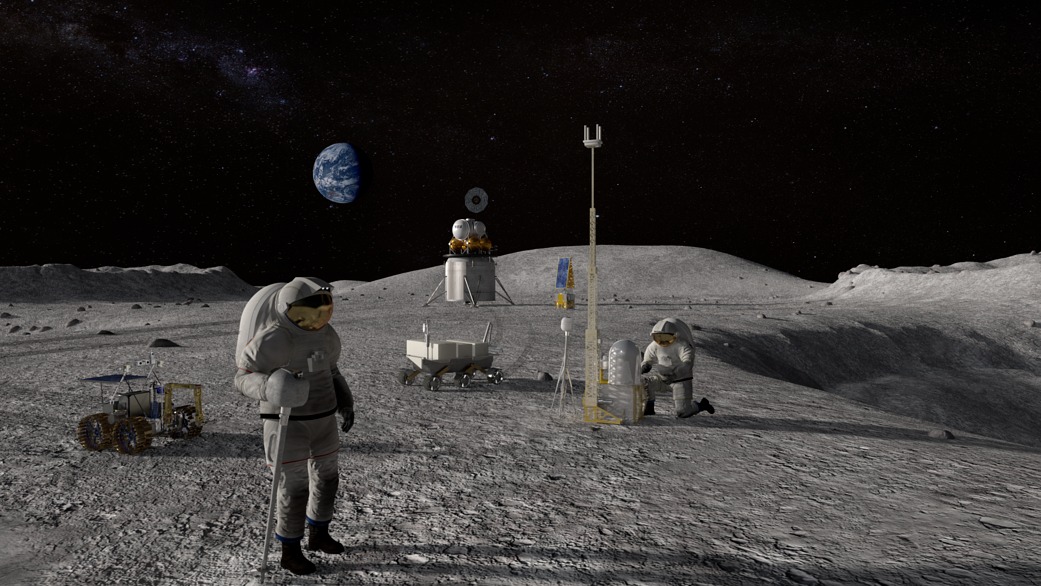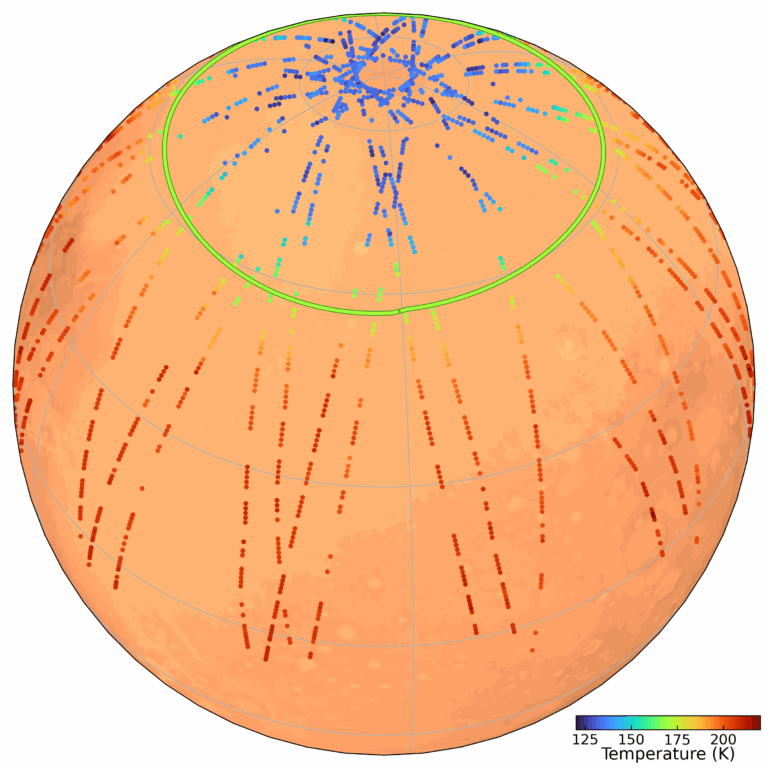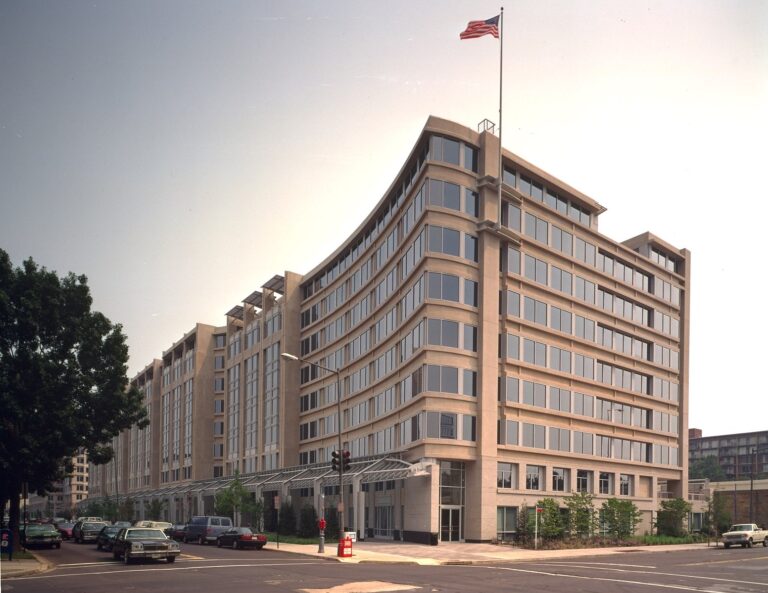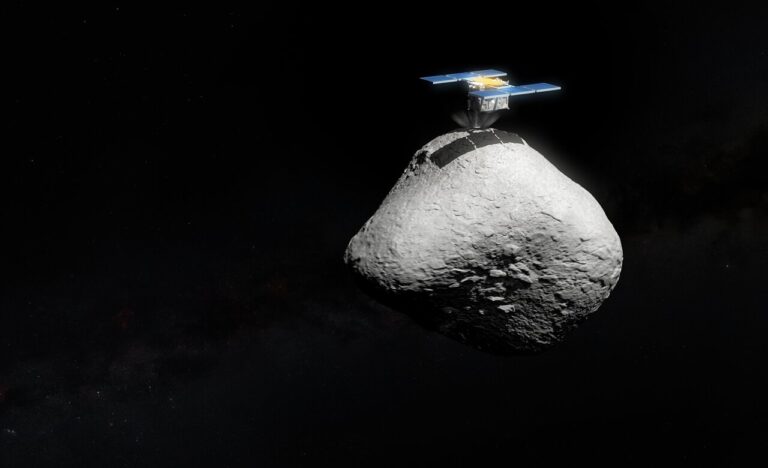
Key Takeaways:
By the end of this decade, the Moon will be bustling with activity. Our closest celestial neighbor will witness the arrival of the first batch of astronauts since the Apollo era over half a century ago. Dozens of robotic explorers will be placed on and around it by multiple countries vying for permanent bases on its dark, pockmarked surface, as well. As a revival of the lunar race inches closer, scientists have just begun working out a key question: What time is it on the Moon?
It turns out the simple question has a complicated answer. So far, lunar missions functioned on the time of their respective home countries. However, early last year the European Space Agency (ESA) deemed this system unsustainable for the upcoming swell of Moon missions.
Without a standard time for the Moon, “there’s a risk that something could go horribly wrong,” says Catherine Heymans, an astrophysicist at Edinburgh University in the U.K. “This clock does need to be defined.” Multiple spacecraft from different countries are expected to be on or around the Moon at the same time, underscoring the need for a common lunar time — and by extension a navigation system — that would facilitate real-time communications, avoid collisions, and carry out joint operations, per the ESA.
On April 2, over a year after ESA identified the issue, the White House directed NASA to set up the new standardized lunar time by the end of 2026. This Coordinated Lunar Time (LTC) is a necessity for the “safety and accuracy” of future Moon missions, Steve Welby, the deputy director for national security at the White House Office of Science and Technology Policy, said in a statement on April 2.
“The White House intervention is very helpful because it really puts the foot on the accelerator to get this to happen ahead of the planned Artemis landing by the end of 2026,” says Heymans.
Additionally, a consistent lunar time is required to create the Moon’s own GPS, said Welby. Currently, scientists depend on a network of radio antennas to routinely ping spacecraft and calculate the time it takes for the spacecraft to ping back, from which scientists zero in on their locations. However, the Moon’s global navigation satellite system (GNSS), a small constellation of satellites that space agencies hope to accomplish by 2030, could provide better position tracking the same way GPS provides timing and location data to smartphones and in-car maps here on Earth.
Timekeeping on the Moon
To us earthlings, time doesn’t change. Even when you’re very bored and feel time is passing by excruciatingly slowly, the seconds tick by at the same pace as always — each second defined as 9,192,631,770 energy transitions within a cesium atom, which is the decades-long, ultra-precise method of universal timekeeping.
Time moves just a tad faster on the Moon, where gravity is one-sixth that of Earth. For instance, if you were to fly a clock from Earth – and wait the 50 years it would take for the offset to build up – the lunar clock would run a second faster than the one on Earth.
“It feels like science fiction, but it’s not,” says Heymans. “This is a very solid prediction of the theory of general relativity, one of the best tested theories that we have that explains the fabric of our universe.”
Related: How long is a year on other planets? | How much you’d weigh on other planets
According to relativity, proposed by Albert Einstein over a century ago, atomic clocks placed at different gravitational fields would tick at different rates. This is true for astronauts aboard the International Space Station as well, but their orbit is sufficiently close to Earth for them to calibrate their clocks to Earth’s Universal Coordinated Time (UTC). Human and robotic explorers staying long-term on the Moon, however, would very slowly inch away from the time on Earth. “It’s a very, very subtle difference,” says Heymans. “Time isn’t absolute.”

That minuscule difference wouldn’t be a bother if there was only one crew working on the Moon, in which case these changes could be easily accounted for, she added. Given the surge of interest from multiple nations, however, “accurate time measurement becomes even more imperative.”
NASA’s proposed LTC time zone is “a system that, while independent, maintains traceability to Earth’s Coordinated Universal Time (UTC) to facilitate seamless time conversion,” says Julian Coltre, public affairs officer in NASA’s Space Operations Mission Directorate.
Lunar timekeepers
It is unclear just how the space agencies will establish time on the Moon, and many technical details are yet to be worked out. One of the open questions is whether Moon time should be maintained by placing atomic clocks on the Moon or be synchronized with Earth, in which case a relay system would need to continuously communicate with our planet to register the time and convey that to lunar habitants.
“This will take some studying and planning, and that’s how the agency will begin the process,” says Coltre. To learn about how LTC relates to UTC, “NASA may seek to perform a demonstration mission with clocks on the lunar surface based on atomic clocks that fly on spacecraft today.”
The wackiest of all ideas is to time flashes of light from faraway spinning stars known as pulsars, which are immensely magnetized neutron stars that birth out of collapsed remnants of dead stars. As they rotate, electromagnetic radiation blasted from their magnetic poles flash in Earth’s direction like a lighthouse beacon — a predictable “pulse” that astronomers observe regularly with radio telescopes. Although scientists can measure time with significantly lower precision using pulsars than they do with atomic clocks, the stars wouldn’t demand calibration like degrading clocks would, thus offering centuries-long stability.
While it is interesting to consider whether the Moon would have multiple time zones like Earth does, NASA “currently doesn’t see a use case for multiple time zones on the Moon,” says Coltre.
We use 24 time zones set one hour apart, which have been adopted to regulate day and night worldwide based on Earth’s rotation. A day on the Moon lasts for two Earth weeks, meaning astronauts would invariably need to sleep for portions of local days and work during local nights, rendering different time zones unnecessary, says Heymans.
While these issues are technical at heart, they represent a paradigm shift in timekeeping, which has leaped from tracking the sun and stars, then relying on clocks, to now establishing the same technology beyond Earth.









